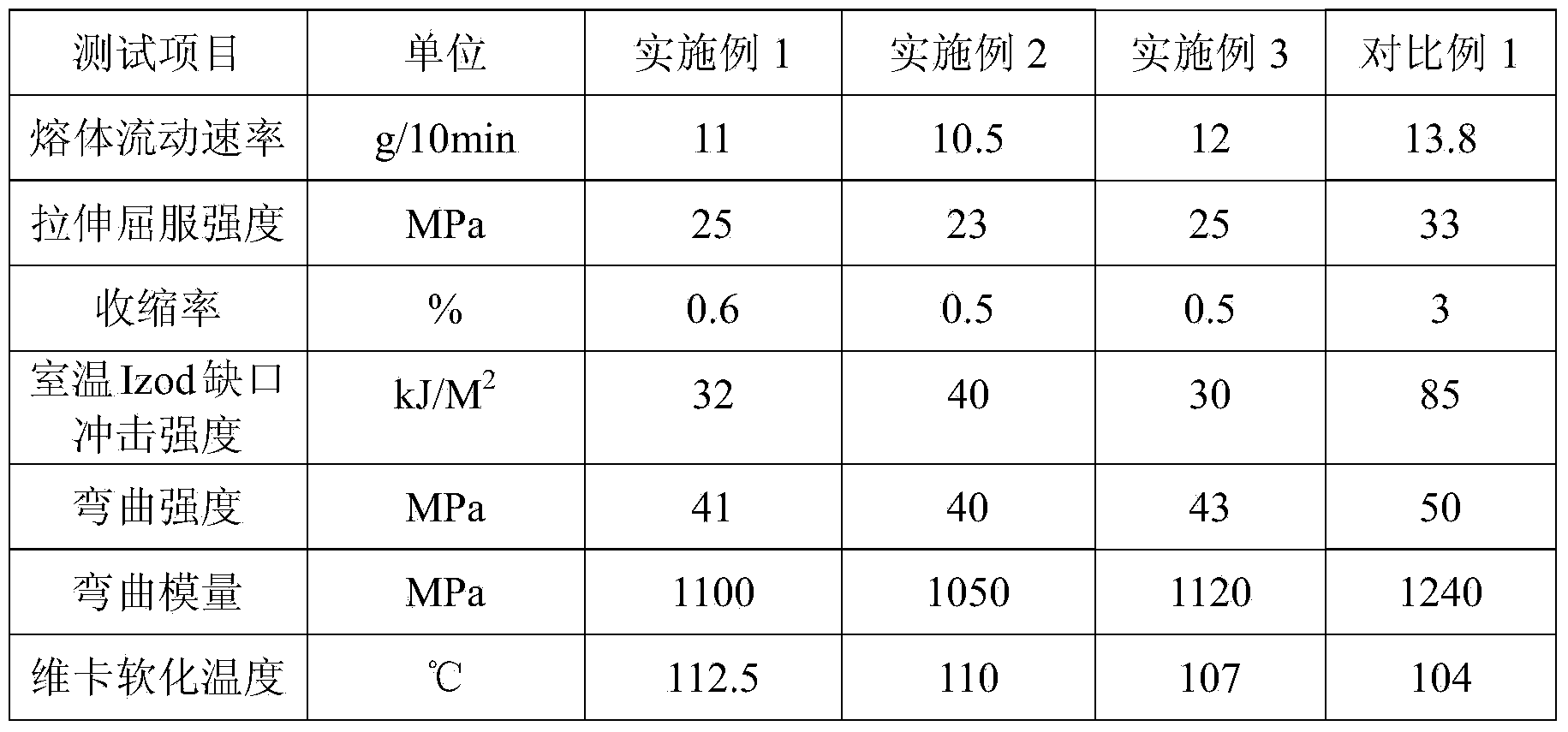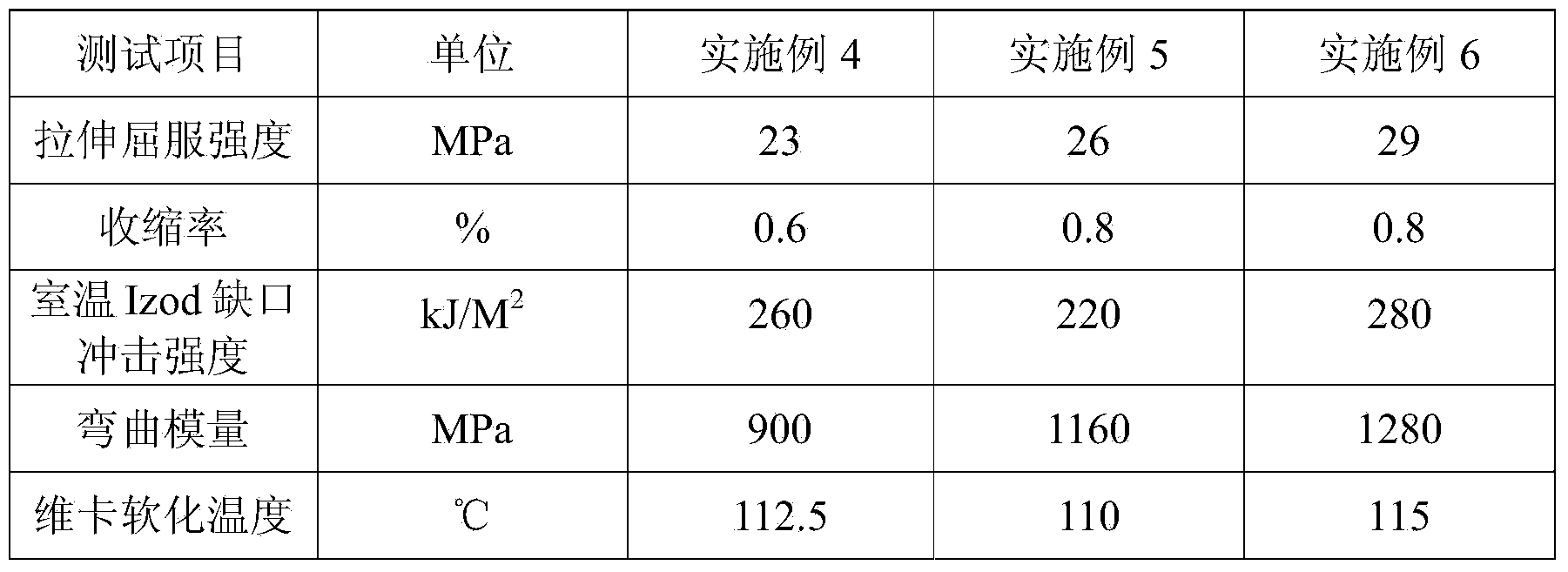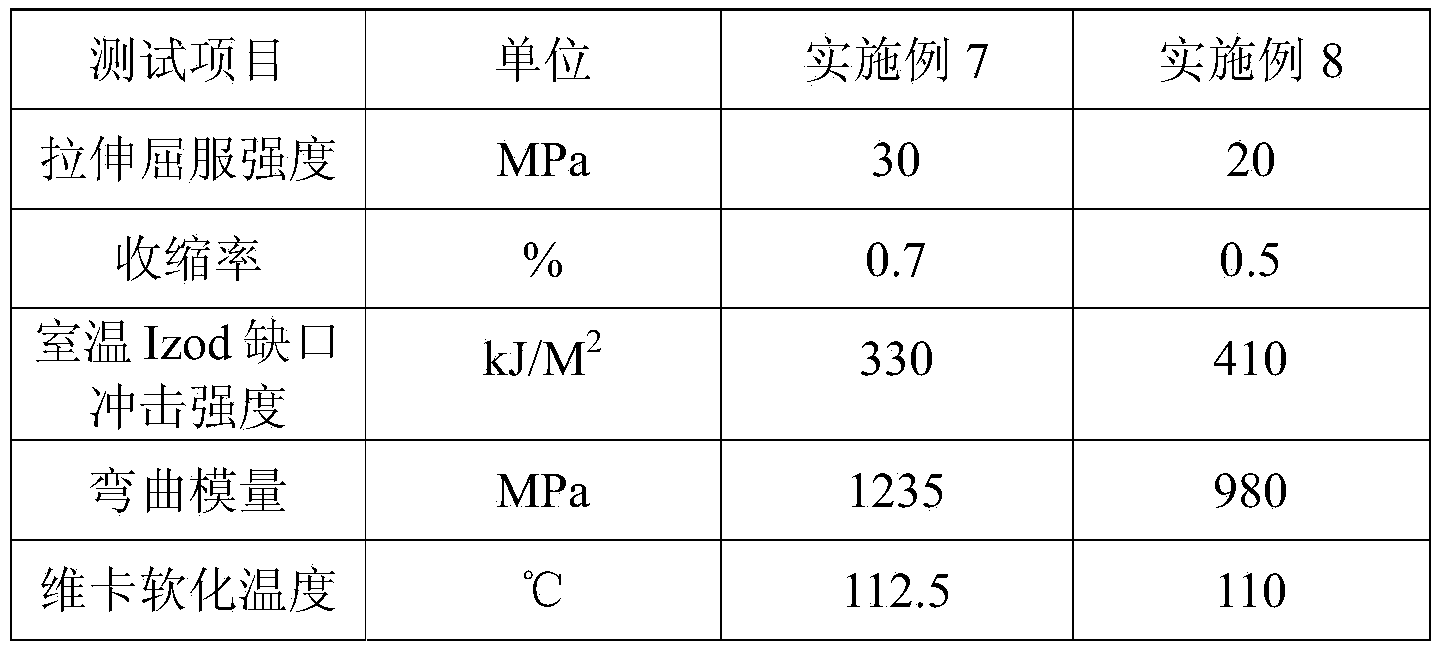High-shock resistance polypropylene/polybutylene composite material as well as preparation method and purposes thereof
A technology of high-impact polypropylene and composite materials, applied in the field of polymer materials, can solve problems such as poor low-temperature impact resistance, large molding shrinkage, and easy aging, and achieve outstanding impact resistance and excellent compatibility. Effect
- Summary
- Abstract
- Description
- Claims
- Application Information
AI Technical Summary
Benefits of technology
Problems solved by technology
Method used
Image
Examples
Embodiment 1~3
[0032] The components and formulations provided in Table 1 (according to the percentage by weight, the following examples are all the same) weigh the materials, mix them in a high-speed mixer for 5 minutes, and extrude them in a twin-screw extruder with an aspect ratio of 45 and a diameter of 50 Pelletizing to obtain polybutene / polypropylene composite material. The polybutene used is homopolybutene, the isotacticity mmmm=90% of the NMR test, and its melt flow rate (190°C, load 2.16kg) is 5.5g / 10min; the polypropylene is impact polypropylene 8003, The isotacticity is 92%, the melt flow rate (230°C, load 2.16kg) is 13g / 10min, the flexural modulus is 1250MPa, and the impact strength is 60J / M. The temperature of each section of the extruder is: 180°C in the first zone, 200°C in the second zone, 200°C in the third zone, 230°C in the fourth zone, 230°C in the head, and a melt pressure of 17MPa.
[0033] The performance test results are shown in Table 2.
[0034] Components and for...
Embodiment 4~6
[0042] The components and formulations provided in Table 3 (according to weight percentage, the following examples are all the same) weigh the materials, mix them in a high-speed mixer for 5 minutes, and then process them in a twin-screw extruder with an aspect ratio of 45 and a diameter of 50 Extrusion granulation to obtain polybutene / polypropylene composite material. The polybutene used is isotacticity mmmm=78% homopolybutene in NMR test, its melt flow rate (190°C, load 2.16kg) is 0.8g / 10min; polypropylene is homopolypropylene, its melt flow rate is 0.8g / 10min; The bulk flow rate (230°C, load 2.16kg) is 20g / 10min, the flexural modulus is 1.4GPa, and the impact strength is 30J / M. The temperature of each section of the extruder is: 180°C in the first zone, 200°C in the second zone, 200°C in the third zone, 230°C in the fourth zone, 230°C in the head, and a melt pressure of 17MPa.
[0043] The performance test results are shown in Table 4.
[0044] From the test results in Ta...
Embodiment 7~8
[0050] The components and formulations provided in Table 5 (according to weight percentage, the following examples are all the same) weigh the material, mix it in a high-speed mixer for 5 minutes, and then use it in a twin-screw extruder with an aspect ratio of 45 and a diameter of 50 Extrusion granulation to obtain polybutene / polypropylene composite material. The polybutene a used is homopolybutene with isotacticity mmmm=91% in nuclear magnetic test, and its melt flow rate (190°C, load 2.16kg) is 0.8g / 10min; polybutene b is isotactic in nuclear magnetic test Homopolybutene with degree mmmm=63%, its melt flow rate (190°C, load 2.16kg) is 0.8g / 10min; polypropylene is copolymerized polypropylene EPF30R, its melt flow rate (230°C, load 2.16kg) kg) is 15g / 10min. The temperature of each section of the extruder is: 180°C in the first zone, 200°C in the second zone, 200°C in the third zone, 230°C in the fourth zone, 230°C in the head, and a melt pressure of 17MPa.
[0051] The perf...
PUM
| Property | Measurement | Unit |
|---|---|---|
| The melt flow rate | aaaaa | aaaaa |
| The melt flow rate | aaaaa | aaaaa |
| Flexural modulus | aaaaa | aaaaa |
Abstract
Description
Claims
Application Information
 Login to View More
Login to View More - R&D
- Intellectual Property
- Life Sciences
- Materials
- Tech Scout
- Unparalleled Data Quality
- Higher Quality Content
- 60% Fewer Hallucinations
Browse by: Latest US Patents, China's latest patents, Technical Efficacy Thesaurus, Application Domain, Technology Topic, Popular Technical Reports.
© 2025 PatSnap. All rights reserved.Legal|Privacy policy|Modern Slavery Act Transparency Statement|Sitemap|About US| Contact US: help@patsnap.com



